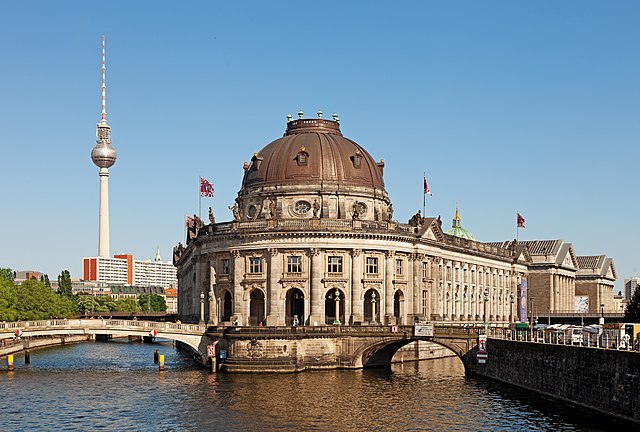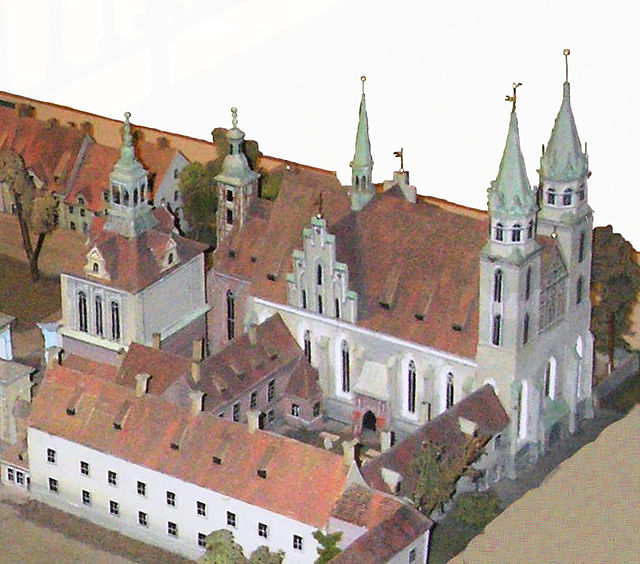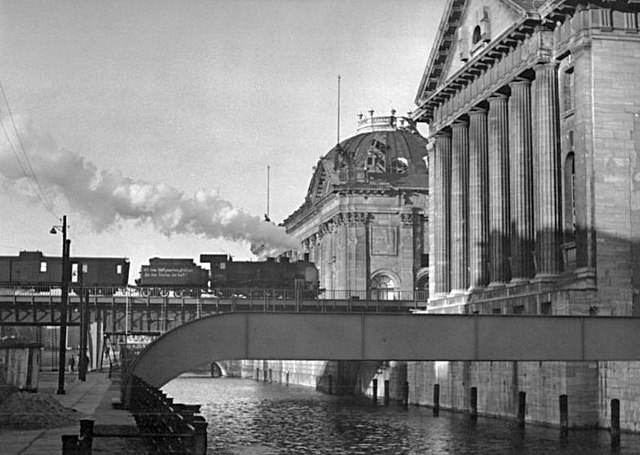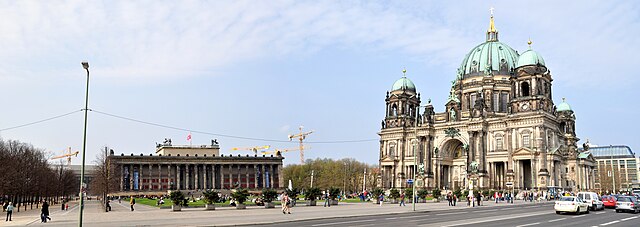Berlin Cathedral, also known as the Evangelical Supreme Parish and Collegiate Church, is a monumental German Protestant church and dynastic tomb on the Museum Island in central Berlin. Having its origins as a castle chapel for the Berlin Palace, several structures have served to house the church since the 15th century. The present collegiate church was built from 1894 to 1905 by order of Emperor William II according to plans by Julius Raschdorff in Renaissance and Baroque Revival styles. The listed building is the largest Protestant church in Germany and one of the most important dynastic tombs in Europe. In addition to church services, the cathedral is used for state ceremonies, concerts and other events.
Berlin Cathedral: Evangelical Supreme Parish and Collegiate Church (2017)
The Supreme Parish Church with its double-tower façade of 1538 with northerly adjacent parts of Berlin's Palace. Miniature shown in the present church building.
View of the interior of the Supreme Parish Church in 1705 (the only known graphic with this view)
The Supreme Parish Church in 1736 with its new towers
The Museum Island is a museum complex on the northern part of the Spree Island in the historic heart of Berlin, Germany. It is one of the capital's most visited sights and one of the most important museum sites in Europe. Originally, built from 1830 to 1930, by order of the Prussian Kings, according to plans by five architects, the Museum Island was designated a UNESCO World Heritage Site in 1999 because of its testimony to the architectural and cultural development of museums in the 19th and 20th centuries. It consists of the Altes Museum, the Neues Museum, the Alte Nationalgalerie, the Bode-Museum and the Pergamonmuseum. As the Museum Island designation includes all of Spree Island north of the Karl Leibniz avenue, the historic Berlin Cathedral is also located there, next to the open Lustgarten park. To the south of Leibniz avenue, the reconstructed Berlin Palace houses the Humboldt Forum museum and opened in 2020. Also adjacent, across the west branch of the Spree is the German Historical Museum. Since German reunification, the Museum Island has been rebuilt and extended according to a master plan. In 2019, a new visitor center and art gallery, the James Simon Gallery, was opened within the Museum Island heritage site.

The Bode-Museum on Museum Island
Museum Island with Pergamon and Bode Museum, 1951
Panorama with River Spree
Altes Museum, Lustgarten, and Berlin Cathedral








